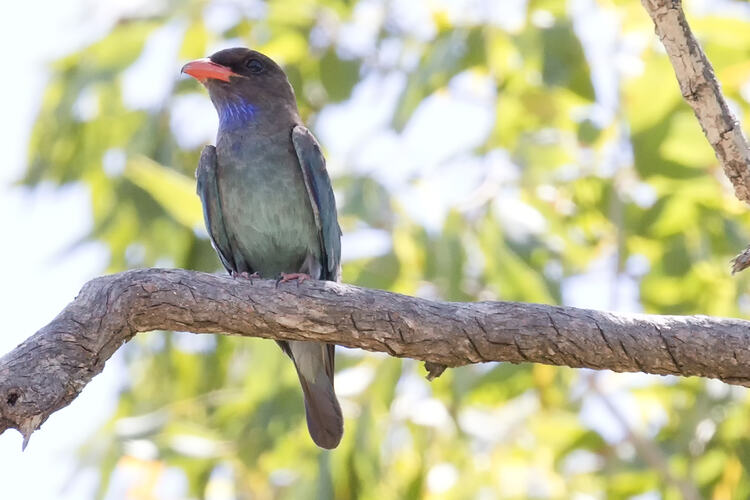General Description
Mostly dark brown upperparts, washed heavily with blue-green on the back and wings. The breast is brown, the belly is lighter and the throat and undertail are a glossy bright blue. The flight feathers of the wing and tail are dark blue. The short thick-set bill is orange-red, tipped with black. In flight, the clearly visible pale-blue coin-shaped patches towards the tips of its wings, give the bird its name. Body length up to 31 cm.
Biology
A migratory bird arriving during September from New Guinea and adjacent islands to breed. In March or April the birds return north for the winter. Feeds almost exclusively on flying insects. They search for food from a conspicuous perch and then capture it in skilful aerial pursuits, before returning to the same perch. Occasionally seen feeding on grasshoppers on the ground, although this practice is uncommon. The distinctive, harsh 'kak-kak-kak' call is repeated several times, and is often given in flight. During the breeding season, pairs are often seen flying in characteristic rolling flights. These flights are more common in the evening, and are accompanied by cackling calls.
Distribution
Northern and eastern Australia.
Habitat
Open wooded areas, normally with mature, hollow-bearing trees suitable for nesting.
More Information
-
Animal Type
-
Animal SubType
-
Brief Id
Dark brown body, blue-green wings and back, short orange red bill.
-
Colours
Brown, Blue-green, Orange-red
-
Maximum Size
21 cm
-
Habitats
-
Diet
Omnivore
-
Endemicity
-
Commercial
No
-
Conservation Statuses
CITES: Not listed, FFG Threatened List: Not listed, EPBC Act 1999: Not listed, IUCN Red List: Least Concern
-
Taxon Name
-
Common Name
Dollarbird
-
Kingdom
-
Phylum
-
Subphylum
-
Class
-
Order
-
Family
-
Genus
-
Species Name
orientalis
